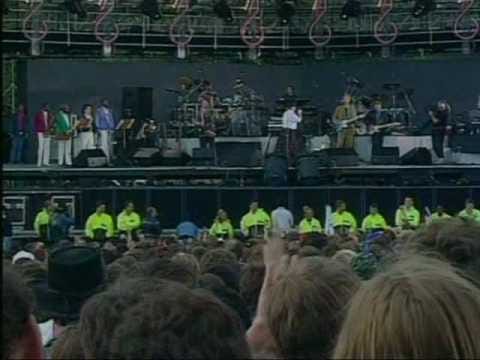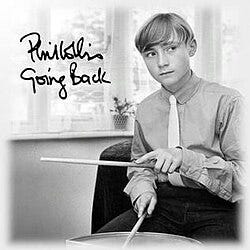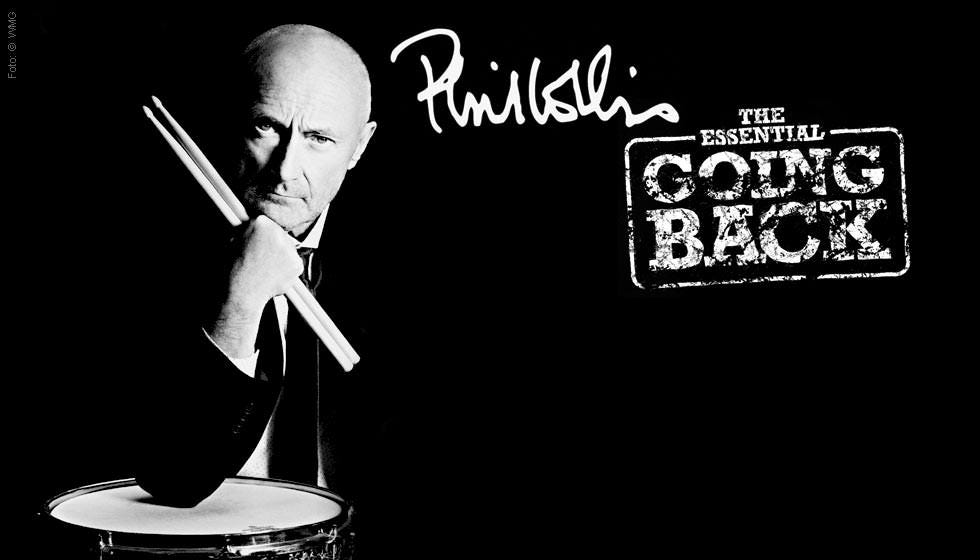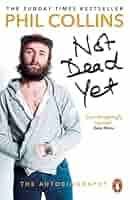Phil Collins - Going Back to his roots
It’s hard to know what to make of the final, FINAL Phil Collins studio album. It’s easy to enjoy it, though.
We listen to music, above all, for enjoyment. If I can avoid overcomplicating this, what we have here is an album packed with Motown and soul classics. How can that fail to be enjoyable? Spoiler alert: it is enjoyable.
Click the cover and listen to Going Back by Phil Collins on the streaming service of your choice.
If you prefer/need them, here are the Apple Music and Spotify links. (Links in the text are to Spotify.)
Why did prog/jazz rock icon Phil Collins make an album of soul covers? There are many reasons, but to the fore must be that, this time, it really was Phil’s last studio album. Why not go full circle back to the music Collins, Peter Gabriel and the rest of Genesis enjoyed listening to as teenagers? Here was an opportunity to celebrate the formative impact of Motown and soul in general. He’d already covered ‘You Can’t Hurry Love’ on Hello, I Must Be Going, and Genesis had (controversially) featured Blues Brothers songs in their ‘Turn It on Again’ medley as part of their live set. Gabriel has released songs such as ‘Sledgehammer’, where he both went back to soul and took the idea forwards.
Genesis, ‘Turn It On Again (medley)
Collins's last album? Well, think about the state of his health when recording this in 2010. Three years previously, he’d reunited with Genesis for their Turn It On Again tour. During that tour, he dislocated some vertebrae in his upper neck and lost some use of his hands. This meant he could now only play drums by taping a drumstick to his hand. There was little prospect of any improvement (indeed, as we’ve seen since, matters would gradually worsen), so why not take the opportunity for one last hurrah?
I find the concept of this album problematic. I’ve never seen the point of covering a song so that it sounds as much like the original as possible. Yes, it’s clever and perhaps proves the cover artist can play on the same level as a legendary original, but is there really any point? Phil’s stated intent for Going Back was not to "bring anything 'new' to these already great records, but to try to recreate the sounds and feelings that I had when I first heard them. My intention was to make an 'old' record, not a 'new' record". This approach is probably an absolute blast to record, but as listeners we can just play the originals, can’t we?
But the album exists, and if making it brought pleasure to an ailing Collins, then why not? And there’s some great music here. To his home demos were added musicians Bob Babbitt, Eddie Willis, and Ray Monette, who were part of The Funk Brothers and played on several Motown recordings from 1959 until 1972, and for Phil to be able to work with these legends justified the project on its own.
Overall, he recorded 29 tracks for Going Back, and it’s been released in various editions, most recently under the title The Essential Going Back.
Where this project succeeds well is in sounding as if it was recorded on analogue equipment in the 1960s. While some vintage analogue equipment was used, Phil’s demos used ProTools and Cubase, so there’s no shortage of modern techniques too.
In terms of the songs, there are many that will be familiar and some deeper choices. The album opens with the title track, Goffin/King’s ‘Going Back’. This is recognisably Phil Collins singing such a great song that would be hard to mess up. Anyway, Collins definitely does not mess it up, and our journey into classic soul has started.
‘Going Back’
I’m not going to do a track-by-track. There are 29 songs in the complete project, and once the style has been established, there’s not a great deal of variation.
‘Papa Was a Rolling Stone’
It’s not all classic three-minute classics. There’s a great version of The Temptations ‘Papa Was a Rollin’ Stone’ (Whitfield/Strong), complete with dramatic strings and the correct groove. Collins, of course, is a great singer with an ability to move across genres with ease, and, like Gabriel, he can count soul in.
‘Do I Love You’
I’ll just pick out one more song: ‘Do I Love You’ (Anders/Spector/Poncia). This swings along on a confident bass sound and authentic-sounding drums (Collins on a 1964-vintage kit).
This album was an extraordinary undertaking for a musician coming to terms with the lasting damage playing drums had caused. It would have been easier to retreat.
I found his previous album, Testify, to be bland in too many places. This is the opposite, and Phil’s performance – okay, one last song – even on slow ballads such as ‘Never Dreamed You’d Leave in Summer’ (Wonder/Wright) is exquisite.
‘Never Dreamed You’d Leave in Summer’
If this is to be the last Phil Collins album (it almost certainly is, given his damage and that he’s recently said he doesn’t have the hunger to make another record), it represents an enjoyable, clever and danceable return to his roots.
There have been some highs and lows along the way, as you would expect and as this series has acknowledged. Overall the world is better for having Phil Collins music in it, and you can’t do better than that.
The Essential Going Back (2010)
‘Going Back’ / 2. ‘Girl (Why You Wanna Make Me Blue)’ / 3. ‘(Love is Like A) Heatwave’/ 4. ‘Some of Your Lovin’’ / 5. Going to a Go-Go’ / 6. Papa Was a Rolling’ Stone’ / 7. ‘Loving You is Sweeter Than Ever’ / 8. ‘Something About You’/ 9. ‘Talkin’ About My Baby’ / 10. ‘Do I Love You’/ 11. ‘Never Dreamed You’d Leave in Summer’/ 12. ‘Take Me in Your Arms (Rock Me for a Little While’ / 13. ‘Too Many Fish in the Sea’/ 14. ‘Uptight (Everything’s Alright’)
That completes the Phil Collins series
If you missed the previous posts, the first was:
The Phil Collins Albums pt. 1 - Face Value
·Tracks: 1. ‘In The Air Tonight’ 2. ‘This Must Be Love’ 3. ‘Behind The Lines’ 4. ‘The Roof Is Leaking’ 5. ‘Droned’ 6. ‘Hand In Hand’ 7. ‘I Missed Again’ 8. ‘You Know What I Mean’ 9. ‘Thunder And Lightning’ 10. ‘I’m Not Moving’ 11. ‘If Leaving Me Is Easy’ 12. ‘Tomorrow Never Knows’ (13. ‘Over The Rainbow’)
If you know a Phil Collins fan who might appreciate these posts, feel free to
So, there we have it – an overview of the eight Phil Collins solo albums. There are more – a couple of live albums, plus one with his Big Band that I will write about in due course. There are two Disney soundtracks and, of course, compilations.
Phil is also known for his playing with others and for his work as a producer. At one point, around the time of No Jacket Required, he seemed to be everywhere (and there’s a ‘Fully Tailored’ version of No Jacket due soon). It’s worth seeking out a 4 CD set called Plays Well With Others (aff.) to hear the sheer range of his ‘session’ work.
Finally, read what Phil himself made of it all in his book, ‘Not Dead Yet’ (aff).
Did you enjoy this series? What is your favourite Phil Collins album? If I write another series (no promises either way), which artist/band would you like to see featured?
LP returns with my next playlist in a few days. Happy listening to whatever you are enjoying just now.








Thanks for restacking 🙂